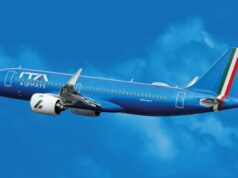SWISS has completed the trials of its new digital procedure for counting its passengers
during the flight boarding process. In view of the trials’ success, the airline will now
replace its present manual passenger counts with a digital process based on artificial
intelligence from 2024. The adoption of the new AI-based procedure is planned for the
third quarter of 2024 for short-haul services and the fourth quarter of 2024 for long-haul
flights. In adopting the new procedure, SWISS has opted for a proven IT solution provided
by Berlin-based start-up Vion AI GmbH. The new AI-based procedure will make the boarding process faster and more efficient, which in turn will both enhance customers’
boarding comfort and ease the cabin crew’s workload. It will give the process greater
security, too. All the rigorous Swiss and European data protection provisions will be duly
and fully observed.
Swiss International Air Lines (SWISS) is to adopt a new artificial intelligence-based procedure for counting its passengers during the flight boarding process in the course of 2024. Once the new AI-based procedure is adopted, there should be no further need to conduct manual passenger counts on board. The tender process to find a corresponding IT partner for the new procedure was won by Berlin-based start-up Vion AI GmbH. The new AI-based passenger counting procedure should be introduced in the third quarter of 2024 for short-haul services and the fourth quarter of 2024 for long-haul flights.
“In adopting this AI-based solution for counting our passengers during boarding, we’re taking another major step forward into the digital future,” says Oliver Buchhofer, SWISS’s Head of Operations. “There are a lot of advantages to this new procedure,” Buchhofer continues. “The use of artificial intelligence will help make the boarding process faster and more efficient. This in turn will reduce waiting times and give our guests a pleasanter travel experience. The new digital count will ease the workload on our cabin crews, too. And it will eliminate the kind of irregularities to which traditional manual passenger counts are susceptible, which will further enhance our security and safety margins.”
“We are proud to be working with SWISS to enhance the safety, security and efficiency of air transport at the European level,” adds Vion AI CEO Michael Busch. “Our AI-based solution is founded on in-depth AI models which we develop in-house, and which reflect our firm commitment to innovation and cutting-edge technology. It’s this that enables us to offer the 2/3 aviation sector tailored solutions for applications that demand high degrees of precision and care. We’re looking forward to collaborating with SWISS; and we’re convinced that we can jointly make vital contribution to ensuring safer, more secure and more sustainable air travel.”
Trials successfully completed
The decision to adopt the new AI-based passenger count procedure at SWISS follows three months of trials in spring of this year. The trials entailed videoing examples of the boarding process for all aircraft types and under a wide range of conditions. These recordings were used to develop a first prototype of the new software required, which was then employed to count passengers during boarding using artificial intelligence (AI). It did so reliably, making the trials a success.
SWISS and Vion AI will now further develop and refine the software trialled over the next few months. This work will also entail the renewed use of cameras during boarding on selected flights. Crew members will continue to conduct a supplementary manual passenger count for the flights concerned.
Data security and data protection assured
SWISS attaches the highest importance to data security and data protection. All the recordings made of its passenger boardings will be processed in full compliance with the strict European (GDPR) and Swiss (FADP) data protection provisions, and will then be deleted. The data obtained will be used solely for passenger count purposes, and will not be used for any personal identification. In addition, only visual images will be recorded, and only in the aircraft door area.
No further recordings (such as audio) are envisaged.












